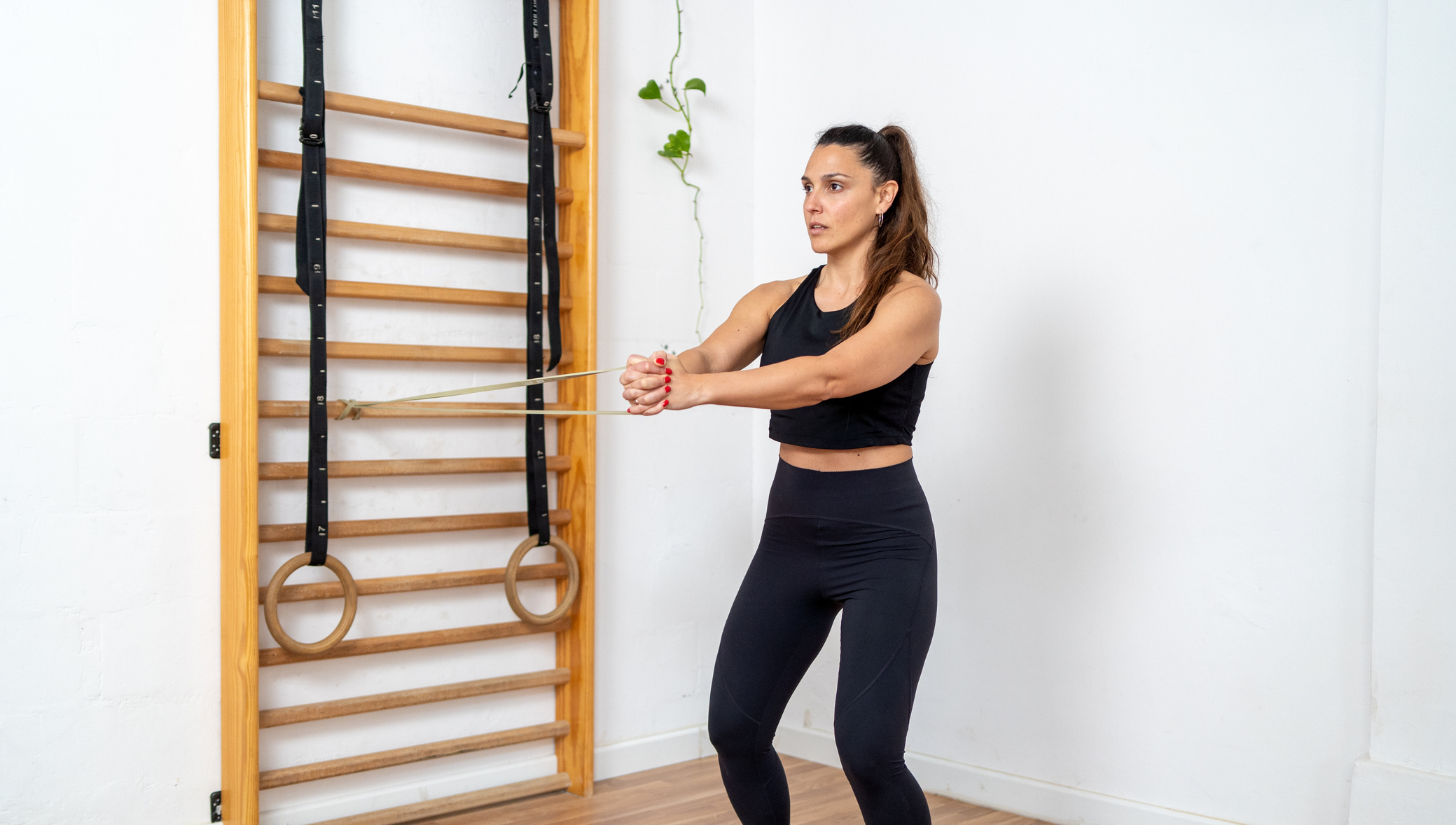The physical therapist-approved standing abs exercise that will strengthen your core in a way sit-ups can't
There's more to core training than sit-ups—try this exercise that will help you develop core stability

There are many benefits to strengthening your core. For a start, having a strong core can improve your posture and reduce lower-back pain. It will also improve how you move during everyday life and when working out.
Developing a strong core doesn't require you to perform hundreds of sit-ups. Stacy Orsborn, personal trainer and founder of the women's fitness franchise VICTRESS MVMT, says there's one type of movement that a lot of people should include in their core workouts but don't—anti-rotational exercises.
"Anti-rotational exercises use core stabilization muscles in a different way to common core exercises, such as planks, sit-ups and crunches," says Orsborn.
"Those exercises are contraction and extension movements. In anti-rotational exercises, we're getting into an isometric hold and the body is fighting against that rotation."
And there's a particular anti-rotation exercise Orsborn recommends—the Pallof press.
"The Pallof press is a great exercise to add to your routine. Particularly for women who might be postpartum, some core rehabilitation can be too challenging but the Pallof press is something everyone can do," says Orsborn.
How to do the Pallof press
All you need for this move is a resistance band. You can also do a weighted Pallof press using a cable machine at the gym.
Get the Fit&Well Newsletter
Start your week with achievable workout ideas, health tips and wellbeing advice in your inbox.
- Attach a resistance band to a secure anchor point, such as a squat rack or banister.
- Stand side-on to the anchor point with your knees slightly bent, holding the band in both hands in front of your chest.
- Take a side step away from the anchor point until there is tension in the band and engage your core.
- Slowly extend your arms out in front of you, which will increase the tension in the resistance band. Resist the rotational pull.
- Slowly bring your hands back to your chest.
Alice Porter is a freelance journalist covering lifestyle topics including health, fitness and wellness. She is particularly interested in women's health, strength training and fitness trends and writes for publications including Stylist Magazine, Refinery29, The Independent and Glamour Magazine. Like many other people, Alice's personal interest in combining HIIT training with strength work quickly turned into a CrossFit obsession and she trains at a box in south London. When she's not throwing weights around or attempting handstand push-ups, you can probably find her on long walks in nature, buried in a book or hopping on a flight to just about anywhere it will take her.